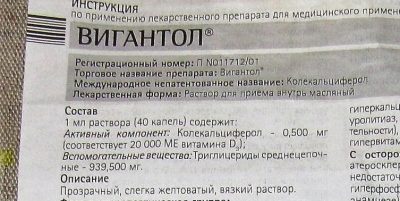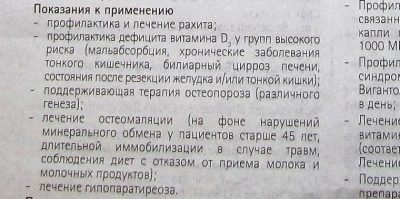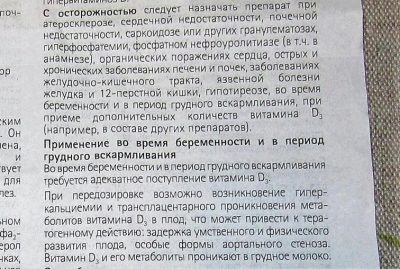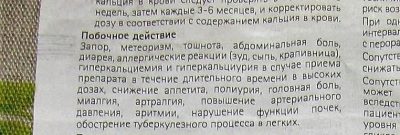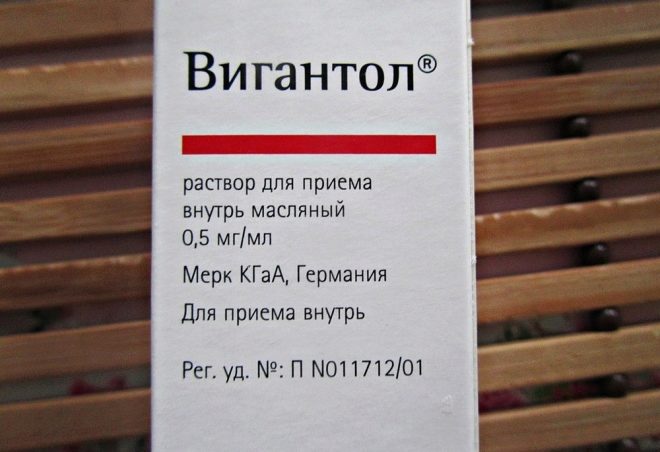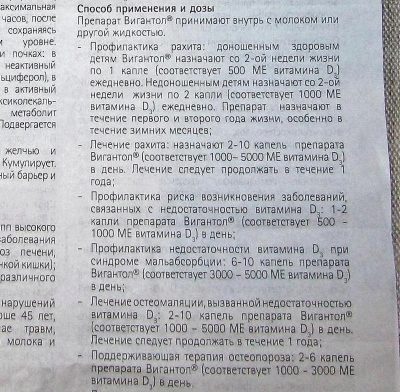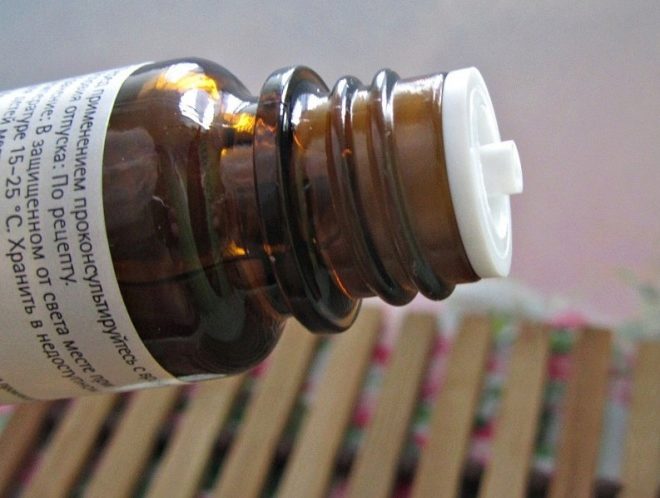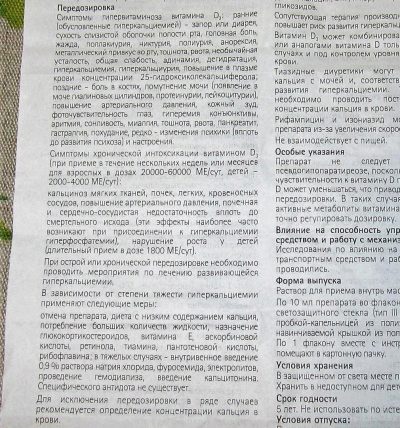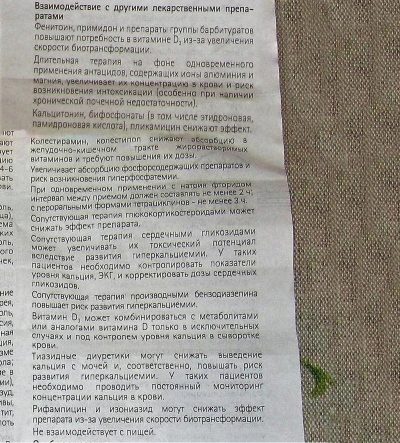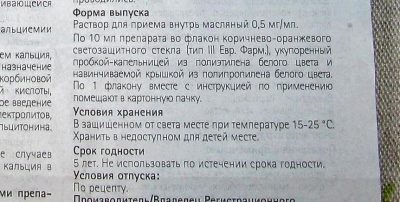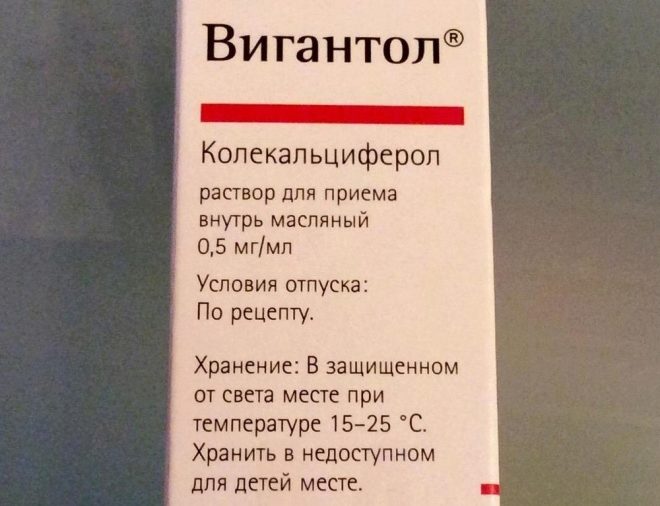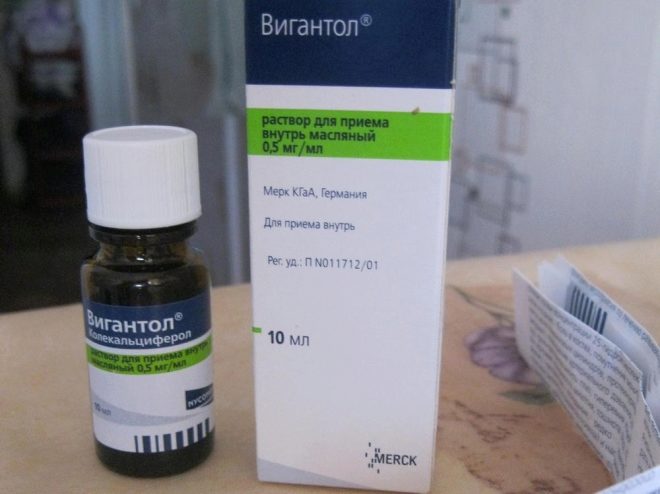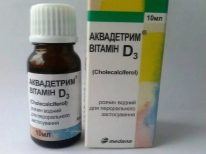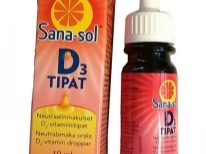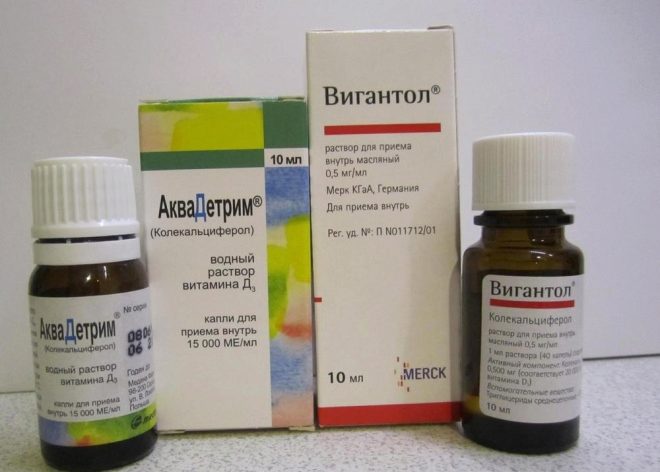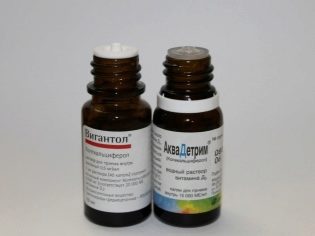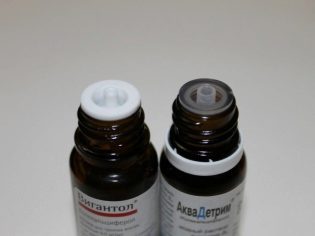Vigantol for children: instructions for use
Perhaps the most popular vitamin often prescribed for children is vitamin D. It is prescribed for the prevention of rickets in the autumn-spring period, when such a substance is formed in the skin in insufficient quantities. One of the preparations of vitamin D is Vigantol. How to give it to children correctly and how does the children's organism react to this medicine?
Release form
Vigantol produced in liquid form, which is a viscous transparent solution of a yellowish hue, odorless and tasteless. One brown-orange glass bottle contains 10 ml of this medicine. There is a dropper cap on the bottle to easily dispense the medication.
Composition
The main ingredient of Vigantola is colecalciferol. 1 ml of the drug, including about 30 drops, contains 0.5 mg of this vitamin, which corresponds to 20 thousand IU. The only auxiliary component of the drops are triglycerides, so the medication is an oily solution. There are no other chemical compounds in the composition of the drug.
Operating principle
Colecalciferol from Vigantola makes up for the lack of vitamin D and affects the exchange of minerals such as phosphorus and calcium. The drug prevents the development of rickets at an early age, improving the absorption of calcium from food in the intestine. The drug is involved in bone mineralization and is necessary for the parathyroid glands, as well as for muscle tone, heart contractions, blood clotting and the functioning of the nervous system.
The form of vitamin D, which is represented in Vigantole (D3), is a natural form that is synthesized in the skin under the influence of sunlight. Its activity in comparison with vitamin D2 is higher by 25%. The drug is absorbed in the small intestine, after which it begins to accumulate in the bones, kidneys, muscles and other tissues, reaching a maximum concentration approximately 4-5 hours after ingestion. The drug is converted into active metabolites in the kidneys and liver, and the remedy is excreted mainly with bile.
Indications
Most often, Vigantol is prescribed for children with rickets or for its prevention. Especially often the solution is prescribed at an increased risk of vitamin D deficiency, for example, if a child has pathologies of the small intestine, he stays in a lying position for a long time due to injury or cannot use dairy products. Also, the drug is indicated for hypocalcemia and hypoparathyroidism.
At what age is it allowed to take?
Full-term babies Vigantol can be given from 2 weeks of age. With prematurity, the drug is allowed from the tenth day of life.
Contraindications
You cannot give Vigantol to a child:
- When hypersensitivity to vitamin D;
- With elevated levels of calcium in the blood or hypercalciuria;
- With the formation of calcium stones in the urinary system;
- With thyrotoxicosis;
- With sarcoidosis;
- When hypervitaminosis D;
- With renal pathology, in which the level of phosphates increases in the blood.
Very carefully, medication is prescribed to young patients with:
- Heart failure;
- Active pulmonary tuberculosis;
- Hyperphosphatemia;
- Renal failure;
- Acute kidney disease;
- Pathologies of the digestive system;
- Phosphate kidney stones;
- Organic pathologies of the heart;
- Hypothyroidism;
- Gastrointestinal ulcer.
Side effects
Taking Vigantola may result in:
- Polyuria;
- Constipation;
- Headache;
- Joint pain;
- Increasing the concentration of calcium in the blood or urine;
- Increased phosphate levels in the blood;
- Loss of appetite;
- Muscle aches;
- Failure of heart rhythm;
- Increase blood pressure;
- Allergies;
- Renal failure;
If a small patient has any of these negative reactions, you should immediately stop using the drops and consult a pediatrician.
Instructions for use for children
Drops in the right dosage immediately before use, add to a teaspoon of milk or some other liquid. If the drug is mixed with baby food, you need to make sure that the child has eaten the food in full and received the entire dose of medication.
To prevent an overdose, with the appointment of the drug in a dose of more than 1000 IU per day or with continuous long-term administration of drops, you should periodically do a blood test to determine the level of calcium.
Treatment
In case of rickets, the medicine is prescribed in a dosage of 2-8 drops (from 1 to 5 thousand IU) per day. If a child has osteomalacia due to vitamin D deficiency, Viganol is discharged at the same dosage and the treatment lasts for 1 year.
Dosage for hypoparathyroidism depends on the level of calcium in the blood plasma. It can be from 15 to 30 drops per day or more. The dose is adjusted after a blood test, which is carried out every 4-6 weeks.
Prevention
- A full-term baby older than two weeks is given to give 1 drop for five days in a row to prevent the appearance of rickets, then pause for 2 days, after which these 7-day courses are repeated. Prophylactic admission is prescribed up to 2 years of age. The drug is not given only in the summer.
- Premature baby Vigantol appointed from the tenth day of life, 2 drops daily in the same course as full-term babies (after five days of daily intake make a break for two days). The drug is not taken in the summer.
- If malabsorption syndrome is found in a child, then for the prevention of hypovitaminosis D Viganol is prescribed in a daily dosage of 4 to 8 drops (approximately 3-5 thousand IU).
Overdose
If you exceed the dose of Vigantola, then hypervitaminosis D develops. Such a condition can affect the stool, as well as manifested by dryness of the oral mucosa, thirst, general weakness, metallic taste, nausea, impaired urine and other signs.
Over time, the child has pain in the bones, blood pressure increases, itching begins, urine becomes cloudy, and the conjunctiva reddens. The child feels very bad, loses weight, complains of nausea, looks drowsy. He also has irregular heartbeat, abdominal pain, mood changes, muscle pain and other negative symptoms.
Prolonged slight excess of the recommended dosage of drops leads to the deposition of calcium in the tissues of the lungs, blood vessels, kidneys and other organs. The patient develops hypertension, chronic heart and kidney failure, and growth is also impaired.
To eliminate overdose, the drug is canceled, and the calcium content in food is limited. The child is given a lot of drinking, prescribed ascorbic acid, thiamine, tocopherol, glucocorticoids, saline and other medicines.
Drug interaction
- If you use Vigantol along with thiazide diuretic drugs, this increases the risk of hypercalcemia.
- Barbiturates increase the metabolic conversion rate of vitamin D3.
- Taking it with cardiac glycosides increases the toxicity of such drugs.
- Do not give the child Vigantol and sodium fluoride. Between taking these medications you need a break of at least 2 hours.
- If a small patient takes inside tetracycline antibiotics, then Vigantol should pass at least three hours between taking them and dropping them.
- The therapeutic effect of Vigantola is reduced when combined with Kolestiramine, calcitonin, glucocorticoid hormones, phenytoin and certain other drugs.
- Vitamin A intake reduces the toxicity of Vigantol.
- Use with phosphorus-containing drugs increases the risk of hyperphosphatemia.
- If you additionally give your child other vitamin D supplements or high-dose multivitamins containing it, this will increase the risk of hypervitaminosis.
- Prolonged concomitant use with magnesium and aluminum based antacid medications may have a toxic effect on the body.
Terms of sale
To purchase Vigantola in pharmacies, you must first obtain a prescription from your pediatrician. The average price of one bottle of medicine is about 200 rubles.
Storage
Keep a bottle of Vigantola at home should be out of the reach of a small child, a place where the rays of the sun do not fall. The storage temperature recommended by the manufacturer is from 15 to 25 degrees Celsius.
The shelf life of the drops is 5 years, provided that the drug is not opened. As soon as the bottle is opened, the solution must be used within 6 months. If after the first use, half a year has passed, you can no longer give this medicine to the child
Reviews
On the use of Vigantola in children, many parents respond well. In their responses, they emphasize that such a drug is important for the development of the child, especially in winter. The effectiveness of the drug, according to them, is confirmed by the absence of rickets in children who regularly receive such drops. The drug is also praised for a convenient dispenser, good composition and neutral taste.
Occasionally there are negative opinions, for example, some mothers are afraid to give an oil solution and prefer water, others are concerned about a large number of contraindications or possible side effects. Moreover, in most cases, babies tolerate Vigantol well. Allergy to this drug is detected infrequently, and compliance with the recommended pediatrician doses allows you to avoid overdose of drops and their side effects.
Analogs
Instead of Vigantola, the doctor may prescribe other vitamin D-based drugs. This may be Akvadetrim, Minisun Drops D3, Vitamin D3 aqueous solution, D3-tipat from Sana-sol and other medicines.
Which is better - Vigantol or Akvadetrim?
These preparations based on colecalciferol have quite a few similar characteristics:
- Both medications are presented in vials of 10 ml of solution.
- One drop of each drug contains 500 IU of vitamin D3.
- Both medications are in demand for rickets and problems with calcium metabolism.
- Drops use the same way - they give the crumbs to swallow after mixing in a spoon with any liquid.
- Both the one and the other drug are allowed to be given at an early age (from 2-4 weeks of age).
- They have similar side effects and about the same price.
- Any medication must be used within six months after opening the bottle.
However, Vigantola and Akvadetrim have very significant differences:
| Viganol | Akvadetrim |
| The basis of the solution are medium chain triglycerides. | The basis of the medication is purified water. |
| The liquid is thicker and yellowish, and the smell is absent. | The drug is watery, without color, but with a sweet taste and pleasant smell. |
| The composition is very simple - there are no other additives besides triglycerides and colecalciferol in the medicament. | Ingredients include sucrose, flavors and preservatives, which increases the risk of allergies in predisposed children. |
| The drug is not used in diseases of the intestine, liver and biliary tract. | With these pathologies, the drug is allowed. |
| Drops give a special pattern - 5 days of admission and 2 days break. | Drops are taken daily. |
| To buy medicine, you need a prescription. | The drug is a non-prescription drug. |
| The shelf life of the unopened bottle is longer, but the temperature during storage is more limited. | Not opened medicine is valid for 3 years. |
Deciding which of these options for vitamin D is best suited for a particular baby should be followed along with the doctor who has been watching the baby since birth. After evaluating the nutrition of a peanut, its living conditions, time of year, skin tone and other conditions, the specialist will be able to determine exactly which remedy and in which dosage will be most suitable.
All about vitamin D and how to get it, in the next video. Dr. Komarovsky comments.



